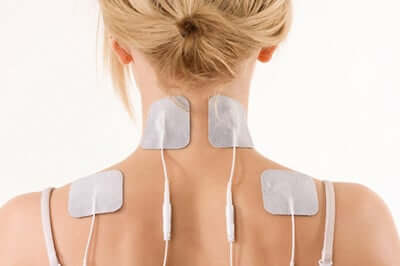Reviewed by Janet D. Pearl, MD, MSc
Most musculoskeletal conditions involving upper or lower limb responds fairly well to physical therapy. Physical therapy improves the circulation and natural healing processes that aid in early recovery. Unfortunately, there is little scientific evidence regarding the efficacy of physical therapy in the treatment of Morton’s neuroma.
Physical Therapy is often supplemented by other modalities. These are:
Therapeutic Ultrasound is a therapeutic modality that has been used by physical therapists since the 1940s. Ultrasound is applied using a round-headed wand or probe that is put in direct contact with the patient’s skin. The sound waves that pass through the skin cause a vibration of the local tissues. This vibration or cavitation can cause a deep heating locally though usually no sensation of heat will be felt by the patient. In situations where a heating effect is not desirable, such as a fresh injury with acute inflammation, the ultrasound can be pulsed rather than continuously transmitted. Therapeutic Ultrasound does not have any effect on Morton’s neuroma and is generally not used in Morton’s neuroma.

Recently, Low Level Laser Therapy (like MLS) is being used to treat muscular and joint pain. This is also referred to as “Cold” laser therapy because it uses low levels of light to treat areas of the body that have been injured, or more accurately damaged in some way. Unlike the very high-powered lasers sometimes used in health care to cut tissue, cold therapy lasers produce photochemical and photobiological interactions that can repair injured or damaged tissue. However, there has been no published study on the use of cold laser therapy in Morton’s neuroma. In fact, there is no study of any kind of laser use in Morton’s neuroma (aside from lasers used in surgery.)

TENS (Transcutaneous electrical nerve stimulation) is an effective treatment for muscular pain whereby electrodes are placed on or near the area of pain and soothing pulses are sent via the electrodes through the skin and along the nerve fibers. The pulses (controlled by the user at all times) suppress pain signals to the brain. T.E.N.S. also encourages the body to produce higher levels of its own natural pain killing chemicalscalled Endorphins and Encephalin. Not only does T.E.N.S. help relieve pain, but the sensation felt is very pleasant and soothing and is totally controlled by the user. TENS is more commonly used in muscular and sometimes joint pain and is rarely if ever used for Morton’s neuroma.



By providing us with your information you are consenting to the collection and use of your information in accordance with our Terms of Service and Privacy Policy.